The origins of the Quicksilver kitchen scene in X-Men: Days of Future Past
How the VFX scene of the year was created
"What we usually do as a process is that we'll go through and we'll model everything up. After modelling, we go and texture stuff, which is getting the right colours on things, and then you do another process called shaders, and that's how surfaces react to light," Crosbie explained.
"Different objects react to light in different ways, so we had to make sure that everything material that existed in that realm worked physically correctly."
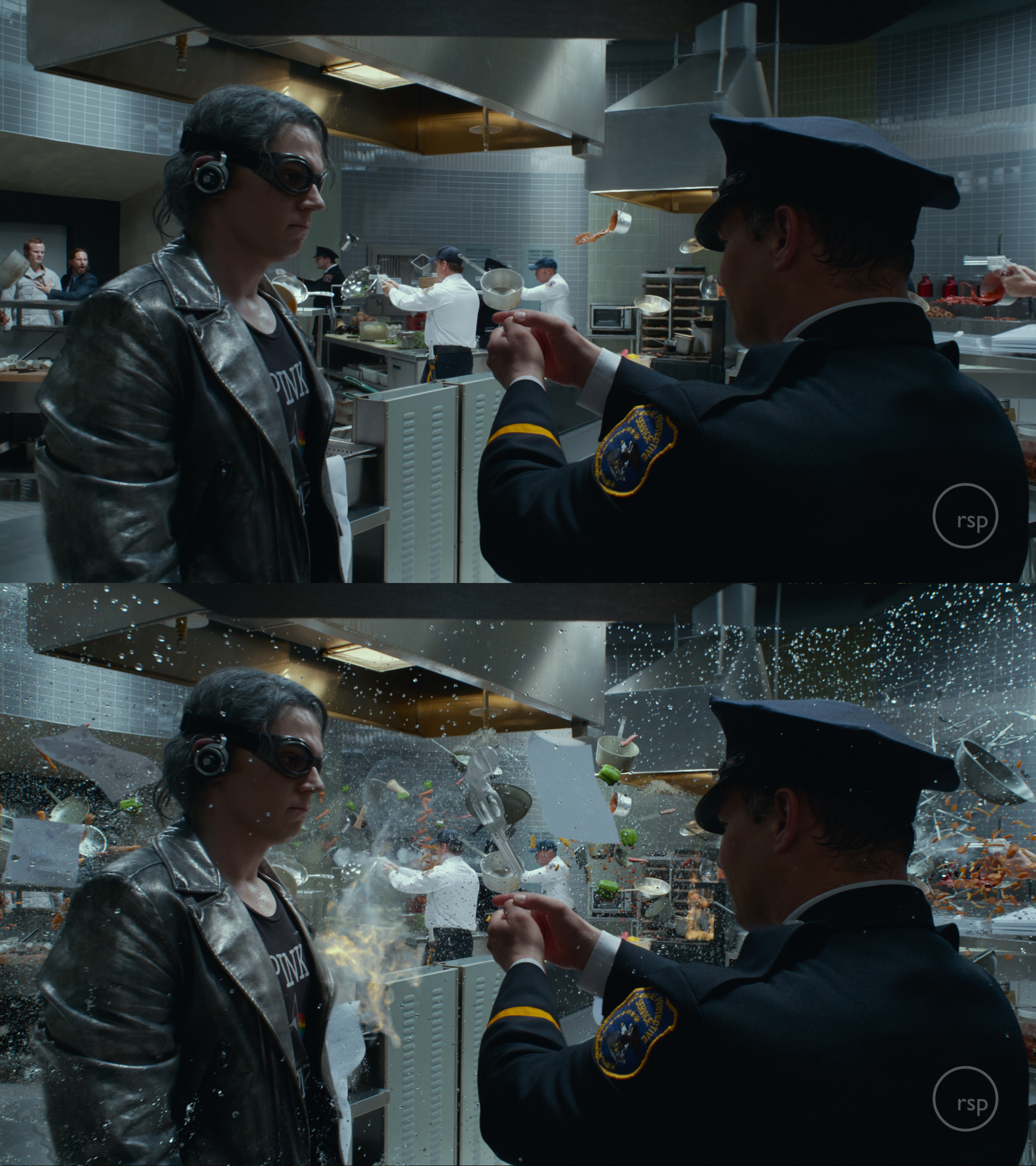
Ensuring accuracy in the digital version of the set required a fair amount of work. Rising Sun received more than 5,000 reference images from the shoot, with every object and setup photographed from multiple angles to ensure as accurate a reproduction as possible.
In fact, the modelling of the assets took RSP almost two and a half months by itself, leaving them just three months to put the final scene together, although intelligent workflows assisted in ensuring the team hit its deadline.
And because of the fact that time has slowed down to a near stop, the studio wasn't able to "cheat" with its effects by adding motion blur or camera shake – instead every single droplet of water needed to both reflect and refract the light accurately.
Super slow mo
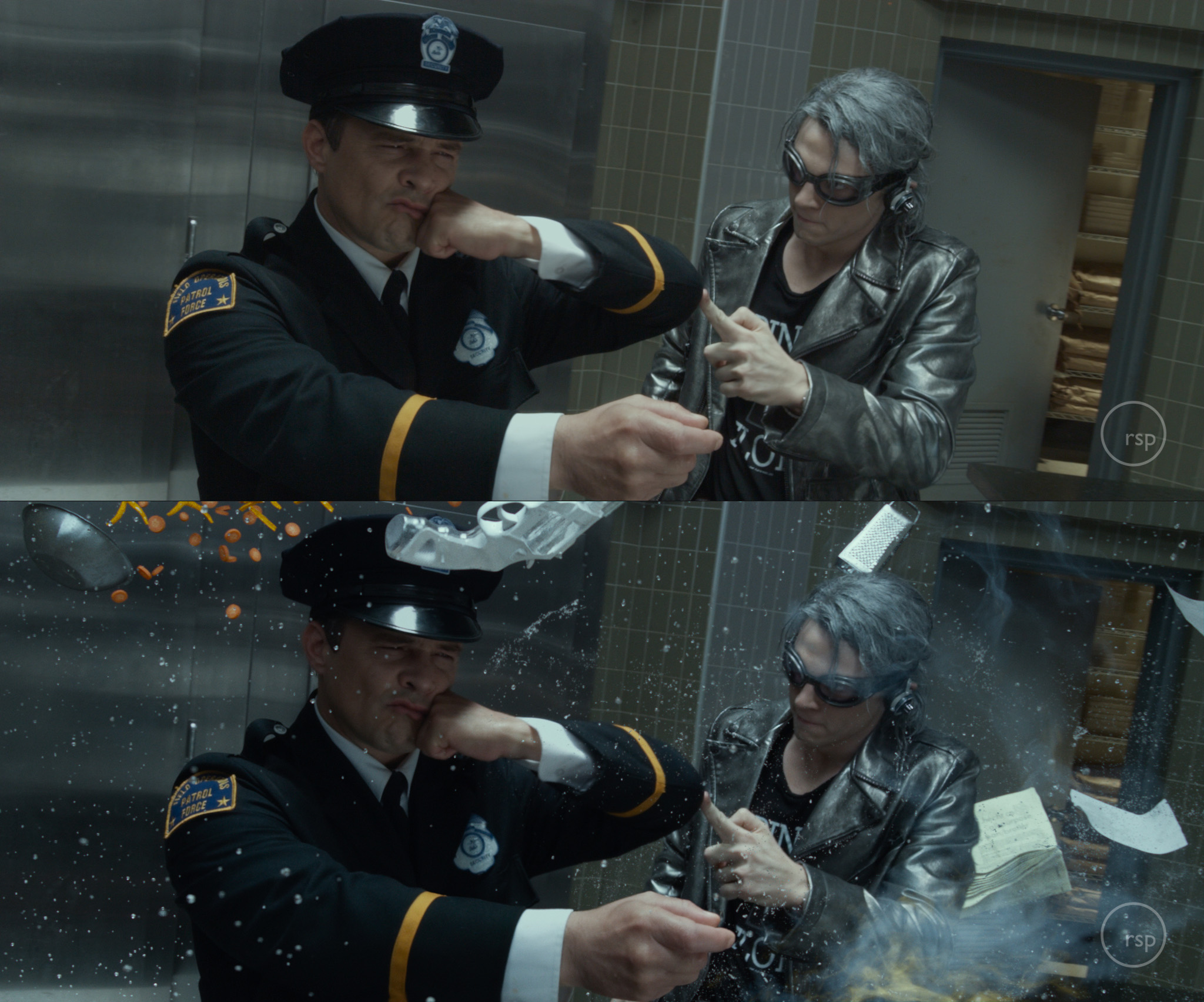
In order to create the sense of slow motion, the live action scenes were shot at 3,200 frames per second using high-speed 3D Phantom cameras.
But when it came time to put it all together, the team at Rising Sun discovered that even 3,200fps was still way too fast for what they wanted.
Get daily insight, inspiration and deals in your inbox
Sign up for breaking news, reviews, opinion, top tech deals, and more.
Adam Paschke, DFX supervisor at RSP, explained that in order to capture the effect, they went to YouTube to examine the real-world physics of super-slow motion.
"We wanted to try and tap into the familiar high speed photography the everyday audience would be familiar with," Paschke said.
"Considering that most of this reference photography – and most of the photography we had from on set as well – was shot at the highest framerate of 3,200 frames per second, this stuff wasn't moving slowly enough," he said.
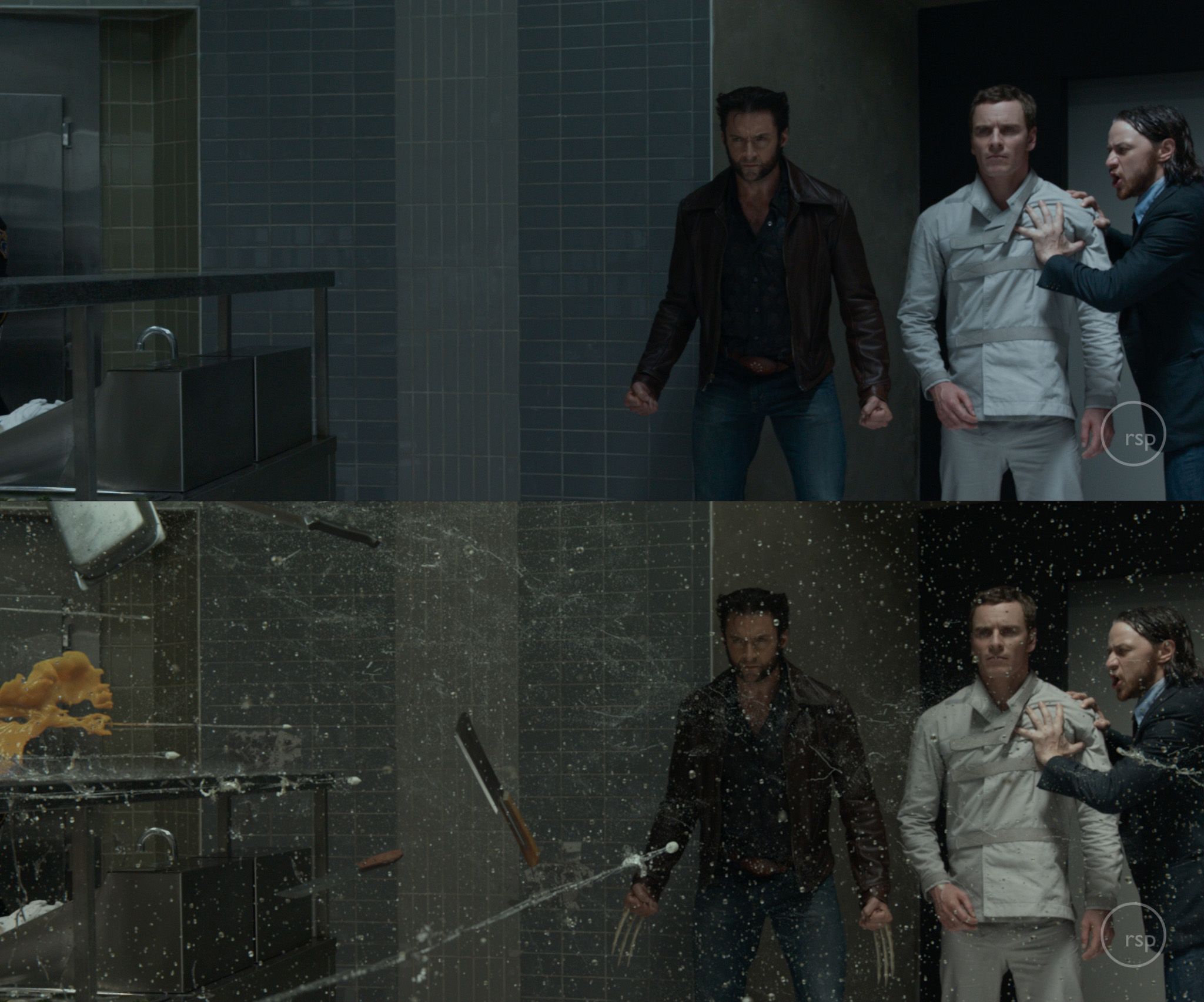
In order to maintain accuracy then, the team had to rely on software to run physical simulations to ensure everything was visually believable.
But what the team found, as they were creating the sequence, was that having every part of the scene running at the same timescale (especially as Quicksilver ran around the room) looked a bit weird. To solve it, they managed to stick all the different effects on independent timescales, that could then be controlled at will.
So while everything you see is based on real-world physics, there's definitely a bit of Hollywood creativity involved to ensure things are enjoyable – which is exactly what you'd expect from a movie about super-powered mutants, when you think about it.
The 'remaining completely motionless' superpower
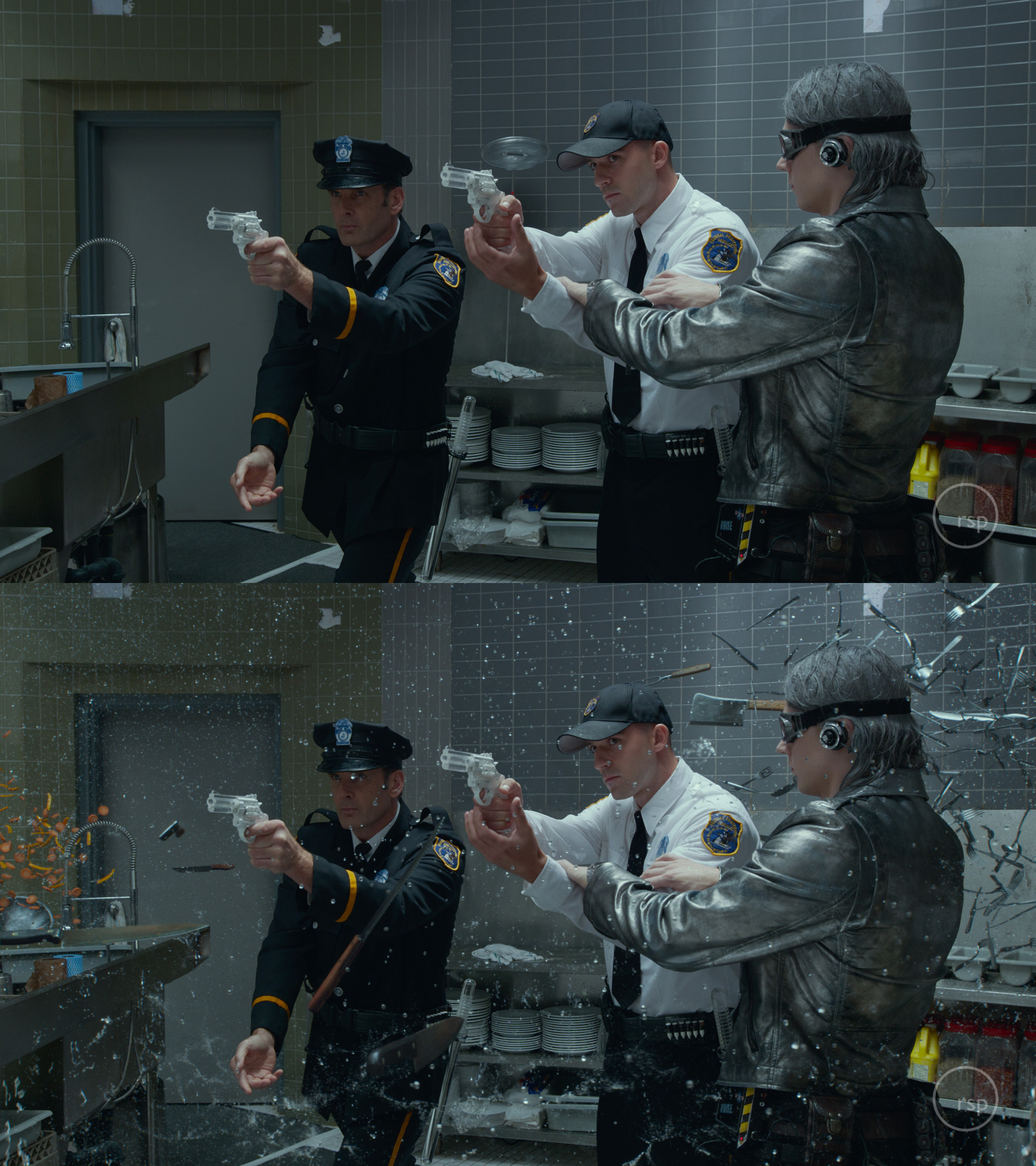
Don't think for a second that the visual effects in the Quicksilver scene are purely adding in virtual carrots and water droplets, though. A big part of the team's job for the final cut was making the actors completely motionless.
While the live action shooting had the various actors standing in place trying to remain completely still, in slow motion every minuscule shake and movement is amplified.
Add in the fact that the scene was shot in stereo 3D and the problem expands dramatically, especially when you introduce the virtual objects like the water and cutlery flying through the air.
At the same time, in order to get the effect of Quicksilver's speed through the scene, the team had to come up with some creative solutions to some fundamental problems, like how many steps he takes to get from one spot to another while travelling at high velocity.
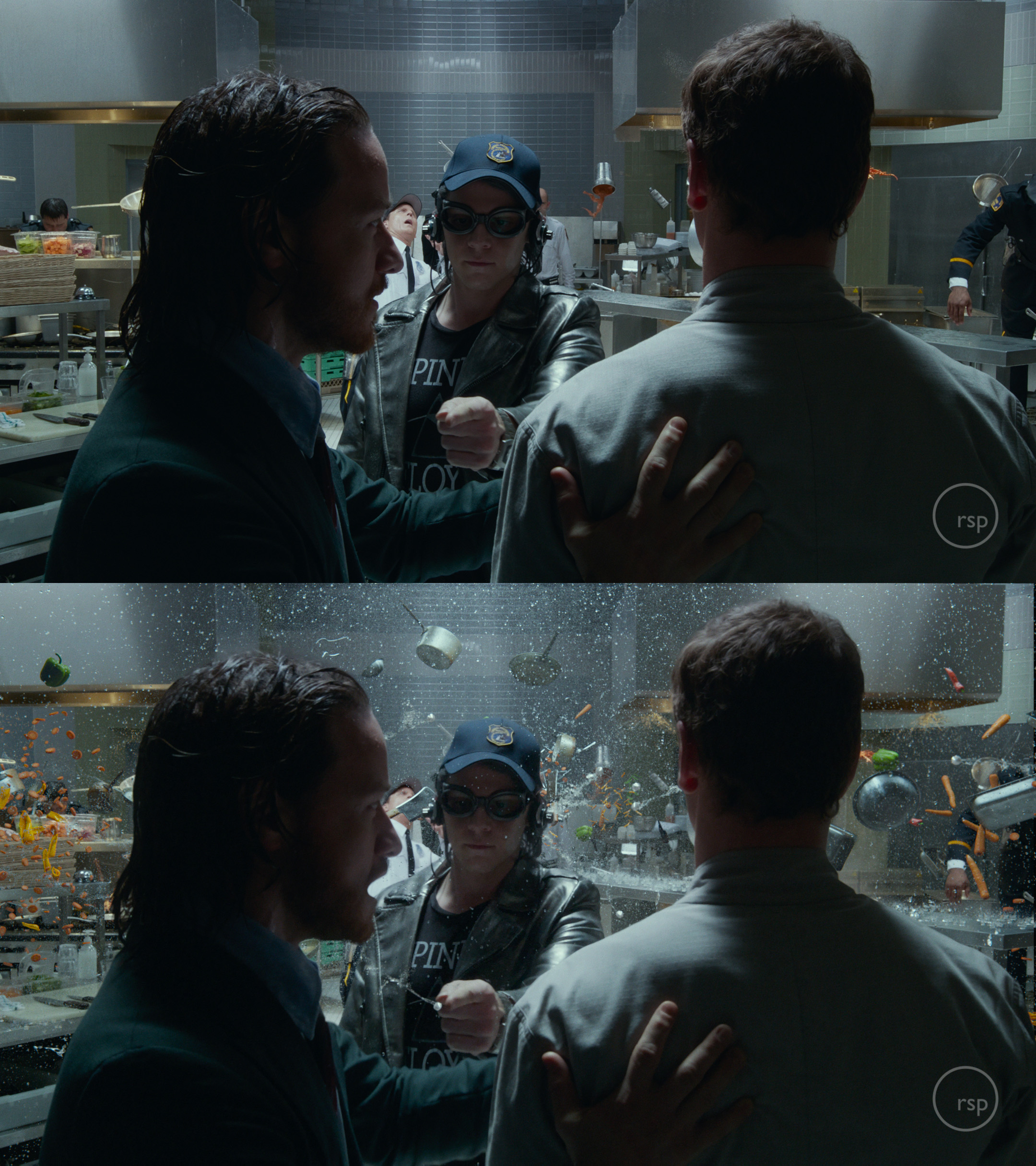
"We really had to look at it in a creative way. First technically figuring out how we were going to solve this, and then how many steps would he really take? How long would he really be standing there?" says Alana Newell, Lead Compositor for the scene.
In early versions of the scene, the camera actually accelerated at the same speed as Quicksilver, but this actually had the effect of pulling viewers away from the action. From here, the team at RSP had to take him out of the scene.
"We had to remove Quicksilver, animate him separately, remove some of his steps because he was taking way too many to get from one position to another, and then we also had to give him a much more visually interesting motion blur," Newell told us.
"It can be quite hard to really hone in on what will make a shot look good – it took a keen eye from one of our supervisor's to find what those problems were," she added.
On the upside, that keen eye looks to have worked. The scene was a highlight of an already exceptional movie, with the flick's VFX supervisor Richard Stammers heaping praise on Rising Sun Pictures:
"The kitchen sequence is undoubtedly the most memorable and awesome sequence in the movie. Every nuance – from the plastic bullet emerging from the gun barrel, to the bell pepper rolling out the door – has been crafted with an attention to detail so high, that people will watch this sequence with wonder for years to come," he has said.
X-Men: Days of Future Past is now available on Blu-ray.